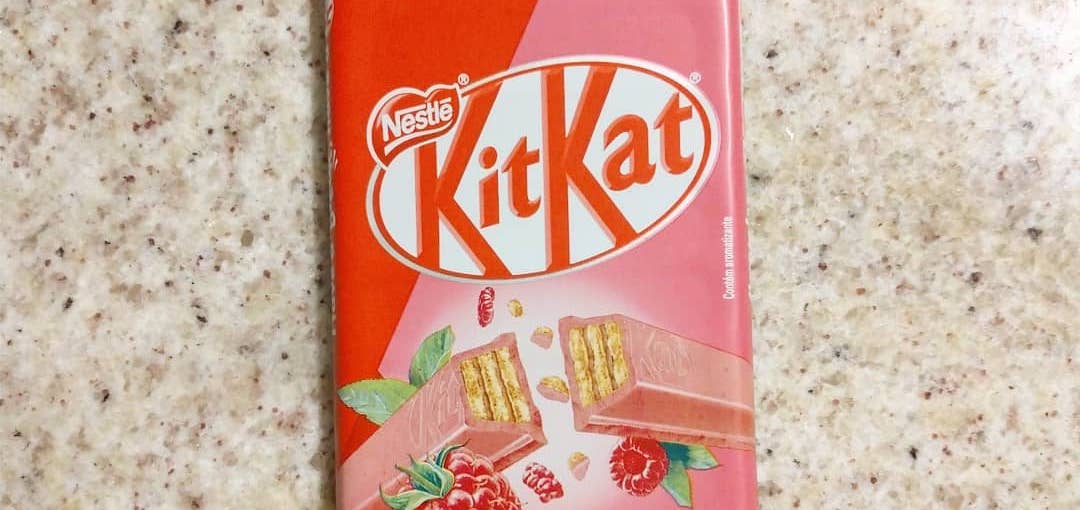Food fans often struggle to accept changes to their favorite brands, but we think you’ll agree that this proposed change to Kit-Kat wrappers is for the better. Kit-Kat makers Nestlé have been looking closely at their packaging recently, including candy wrappers as well as plastic bottles, and specifically at how to make it all more environmentally friendly. They’re aiming to make all of their packaging 100 percent recyclable or reusable by 2025, by using plastics that are easier to recycle, minimizing how many materials they use, and cutting out plastics that can’t be recycled.
In July 2019, Nestlé made an announcement that could change candy bars forever.
On July 2nd, Nestlé announced that their range of YES! bars, which are made with fruits, nuts and vegetables, will be packaged in recyclable paper. The company said that this is a big step forward for the candy industry as a whole, since up to now, the only packaging that could preserve a food’s freshness had to be made from laminated packaging or plastic films, which made it hard to recycle.
Nestle creates wrapper that degrades in the sea within six months https://t.co/rKdEfaLpgl
— Andrea Leadsom (@andrealeadsom) July 3, 2019
There’s more good news.
The Japanese section of the company has just announced that they will be selling five of their larger Kit-Kat products in recyclable paper instead of glossy plastic, starting in September.
Smart, sustainable & fun ! Nestlé Japan is making KitKat packaging recyclable, and ideal for origami! At the heart of all innovative ideas in packaging must be a way to give back or at least push the sustainable envelope. This is a great example of all three ideas and much more. pic.twitter.com/shYaSljwJy
— Alberto M. (@albertommoral) August 11, 2019
And there’s a fun twist — or should we say fold.
Not only will the new packaging be easier to recycle, it will come with instructions to turn your wrapper into an origami crane!
Very clever packaging innovation here: a @KitKat launch from Japan where you can re-use the paper wrapper to make origami. https://t.co/LlymxhBzhe
— Tom Vierhile (@TomVierhile) August 12, 2019
This Kit-Kat fan is embracing the change.
I eat a lot of these, so this is great news! Japanese KitKats swap plastic bags for paper packaging with new origami feature via @RocketNews24En #Japan #kitkat #productpackaging https://t.co/A4n1a0zScx pic.twitter.com/fprJD0uwf6
— Gregor Saita (@gregorsaita) August 6, 2019
Kit-Kat is a pretty big deal in Japan.
The first Kit-Kat boutique opened there in 2014: it’s called the Kit-Kat Chocolatory.
One reason for the candy’s success could be the name: it’s similar to the Japanese expression “kitto katsu,” which literally translates to “surely win” and is used to wish people luck. According to Kotaku, one in three students in Japan buy a Kit-Kat before their exams — and one in five take a Kit-Kat in with them for good luck.
People in Japan get to try some flavors we can only dream about.
Here’s a cherry blossom (sakura) and sake combo:
And a peach and mint mix:
They even have a flavor made from a brand new kind of chocolate.
Meet ruby, which is made from mixing dark, white and milk chocolate. These ruby Kit-Kats also contain nuts and cranberries (hence the pink!)
Kit-Kat wrappers have already been through a recent makeover.
While many are praising Nestlé’s newest paper wrappers, an earlier change to their Kit-Kat packaging caused uproar.
Not liking the new wrapper @KITKAT - it’s not the same if you can’t slide your finger down the foil and then break it into fingers ☹️ @Nestle pic.twitter.com/1tTw6ZfbDc
— Lisa-Jayne Smith (@LJSmith5176) June 26, 2019
There were grip issues.
Supposedly the plastic was harder to open.
There were taste issues.
Here’s a detailed explanation:
I had kit kat bar today...i must tell this time... whenever i had kitkat i wanted to reach this message...that kitkat the 2 fingers in a silver foil taste different than the red wrapper 4 fingers. I enjoy 2 fingers more than four fingers bar...Four fingers have different taste.
— Anita (@sweetlikeme15) July 26, 2019
Ironically given their plan to reduce waste, people accused Nestlé of betraying the environment.
@HughFW I purchased a pack of Kitkat yesterday only to find they have swapped the paper and foil wrapper for plastic! Talk about going backwards. #waronplastic
— MrB (@CarlB_F1) June 29, 2019
In fact, the change came about because of Nestlé’s concerns for the environment. Nestlé were already rethinking their foil and paper packaging in 2015, as part of their pledge to simplify the packaging their products came in and minimize environmental impact. They gradually moved to just plastic — but many people did not handle it well.
@KITKAT give the planet a break. Can we have the old paper and foil wrapping back? It was part of the joy of eating a Kitkat.Single use plastic wrapper is just rubbish.
— leithwalkpolicebox (@Leithpolicebox) February 10, 2018
Nestlé didn’t get all the blame.
Their biggest U.K. rival, Cadbury, who have nothing to do with Kit-Kat packaging, got dragged in:
Funnily enough Cadbury did not respond, and there’s also no word on when the rest of the world will get their Kit-Kats in recyclable paper packages. But with so many people concerned about waste, Nestlé’s new recyclable paper packaging really could break up our dependence on plastic.

